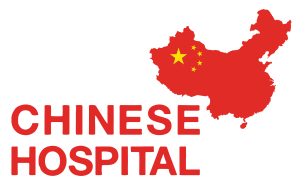As the global cancer burden intensifies, the world’s attention has shifted towards countries capable of driving both innovation and affordability in cancer care. China has rapidly evolved from a follower to a trailblazer in oncology, leveraging its massive clinical infrastructure, government-backed research ecosystem, and growing biotech sector to revolutionize cancer treatment at a global scale.
China's Clinical Trial Boom: A Global Shift in Research Leadership
In a dramatic pivot over the last decade, China has surpassed the U.S. in the number of clinical trials, with over 7,100 trials registered in 2024 alone, compared to approximately 6,000 in the U.S. This momentum is propelled by:
Government policies favoring biotech R&D
Accelerated approval processes by the National Medical Products Administration (NMPA)
A vast and genetically diverse patient pool, enabling faster and more comprehensive data collection
Heavy investments in AI-driven drug discovery and precision medicine
This isn't just about quantity—it's about quality and novelty. China's pipeline includes first-in-class treatments and next-gen biologics, many of which are gaining international recognition.
Case in Point: Ivonescimab (AK112)
This bispecific antibody, developed by Akeso Biopharma, has shown exceptional promise in non-small-cell lung cancer (NSCLC). Clinical results indicate a 48% reduction in disease progression when used alongside chemotherapy—positioning it as a potential game-changer in lung cancer therapy.
Breakthrough Therapies: From Gene Editing to Viral Immunotherapy
China's innovation pipeline is broad, diversified, and increasingly disruptive:
Gene Therapy
Gendicine, approved in 2003, remains the world’s first commercial gene therapy targeting p53 gene mutations in head and neck cancers.
Newer CRISPR-based clinical trials are also emerging, particularly in leukemia and liver cancer, hinting at next-generation gene-editing applications.
Oncolytic Virus Therapy
Chinese firms are advancing therapies that harness engineered viruses to selectively infect and destroy tumor cells while activating the body’s immune response—offering new hope for patients with treatment-resistant tumors.
mRNA-Based Cancer Vaccines
Building on COVID-19 mRNA breakthroughs, Chinese pharma giants like CSPC Pharmaceutical Group are pioneering mRNA oncology solutions. Their candidate, SYS6020, targets multiple myeloma with minimal toxicity, marking China’s entry into the global mRNA race for cancer.
Affordable Oncology: China’s Disruption of Global Pricing Models
One of China's most compelling advantages is its ability to deliver affordable yet advanced cancer treatments.
Average annual cost per patient in China: $7,421–$10,297
Comparable treatment in the U.S.: Upwards of $400,000
Despite the lower cost, the quality of care remains uncompromised. Hospitals like:
Guangzhou Fuda Cancer Hospital
Beijing Cancer Hospital
Shanghai Proton and Heavy Ion Center
...are delivering world-class therapies—from immunotherapy and cryosurgery to proton therapy and CAR-T cell treatment.
These facilities are equipped with JCI accreditation, advanced robotic surgery units, and international treatment standards.
Global Collaborations: China’s Growing Influence in Biopharma
Western pharmaceutical giants are increasingly partnering with Chinese firms, drawn by their innovation speed and production efficiency.
Example:
Pfizer's $6 billion deal with 3SBio, a major Chinese biotech firm, to co-develop and license an experimental oncology drug. This signals global confidence in Chinese-developed IP and reflects the shift in global R&D geography.
Other partnerships include:
Merck & BeiGene on PD-1 inhibitors
AstraZeneca & Dizal Pharma on small molecule therapies
Novartis & Legend Biotech for CAR-T cell innovations
These collaborations enable faster global market entry for Chinese drugs, while improving treatment accessibility in both developing and developed nations.
The Road Ahead: China's Vision for Global Cancer Care
China's National Health Commission has laid out a "Healthy China 2030" strategy focused on:
Enhancing cancer screening and early detection
Expanding access to precision and personalized medicine
Increasing public-private partnerships for global outreach
With over 500 oncology startups, dozens of government-backed bioparks, and accelerated international regulatory recognition, China is not just participating in the global fight against cancer—it is helping to redefine it.
Final Thought from CancerFax
At CancerFax, we believe the future of cancer care is collaborative, innovative, and borderless. China's emergence as a powerhouse in cancer treatment—through a synergy of affordability, accessibility, and technological advancement—offers a blueprint for democratizing cancer care worldwide.
We will continue to monitor and report on these developments to ensure patients, caregivers, and healthcare providers remain at the forefront of oncology innovation.




